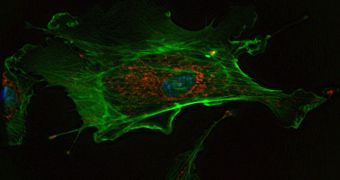Whenever proteins in the cellular membrane are destroyed, researchers need to let them go, and begin searching for other viable populations to conduct their studies on. But this is not true with an observations technique called X-ray Free-Electron Lasers (XFEL),
This emerging technology will allow investigators to develop a new series of targeted drugs and other similar compounds in the near future, just as soon as all of its components are fully developed.
Membrane proteins are critical to the transfer of drugs inside the actual cell. An estimated 70 percent of all drugs rely on these small molecules for their beneficial action.
If the proteins do not allow the drugs to pass, then none of the chemicals contained therein will have any effect. The membrane protein problem (MPP) problem is therefore well known to experts working for pharmaceutical companies.
One of the reasons why designing drugs is not easier is that the proteins inside membranes cannot form the crystals that are usually analyzed via an observations technique called X-ray crystallography.
But X-ray Free-Electron Lasers have thus far showed tremendous promise in this field, in the sense that they are well suited for determining the structure of these proteins.
The reason why XFEL is so good at what they do is the fact that they are large facilities, capable of producing such a bright X-ray source, that they can view single molecules without having to rely on crystal formation to make them visible.
“This result has far-reaching implications for the future development of structural biology, because it removes a significant obstacle to the practical realization of the molecular microscope using XFEL sources,” explains expert Harry Quiney.
He is based at the ARC Center of Excellence for Coherent X-ray Science (CXS), but also holds an appointment as the School of Physics at the University of Melbourne.
Details of the new work appear in the latest issue of the esteemed scientific journal Nature Physics. The director of the Australian Research Council CXS, professor Keith Nugent, also led the investigation.
“My colleagues and I are convinced that our recent work is a critically important step forward. We are very much looking forward to working with our Japanese colleagues in the coming years,” says Nugent.
He is also a laureate professor, and a federation fellow with the ARC. The expert believes that these are exciting times for X-ray science, as well as for the field of medicine.

 14 DAY TRIAL //
14 DAY TRIAL //